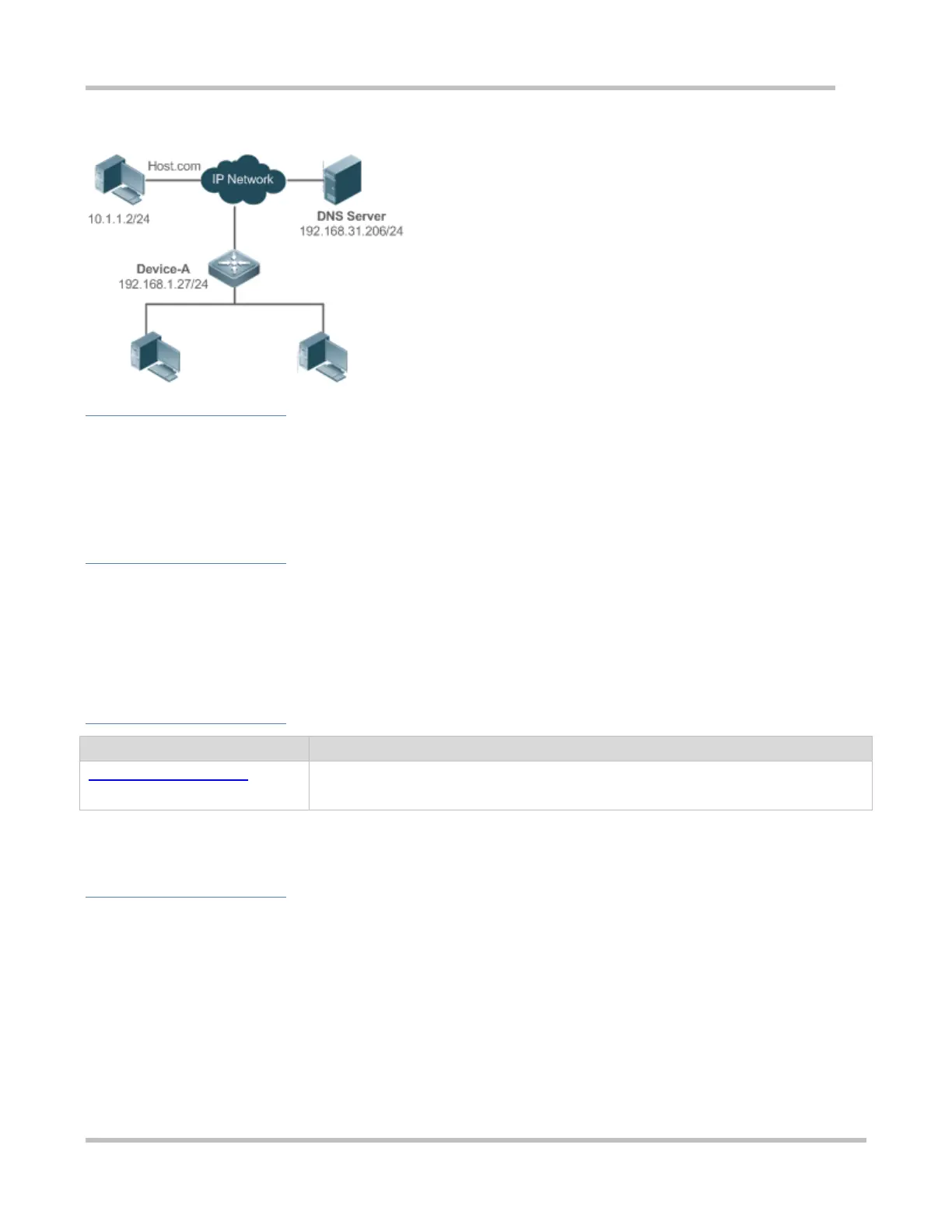Configuration Guide Configuring DNS
Figure 6-1 Dynamic Domain Name Resolution
Deployment
Deploy DNS Server as the DNS server of Device-A.
6.3 Features
Basic Concepts
DNS
The DNS consists of a resolver and a DNS server. The DNS server stores the mappings between domain names and IP
addresses of all hosts on the network, and implements mutual conversion between the domain names and IP addresses.
Both the TCP and UDP port IDs of DNS are 53, and generally a UDP port is used.
Features
IP addresses are obtained based on domain names from a DNS server or a local
database.
6.3.1 Domain Name Resolution
Working Principle
Static Domain Name Resolution
Static domain name resolution means that a user presets the mapping between a domain name and an IP address on a
device. When you perform domain name operations (such as Ping and Telnet) through application programs, the system can
resolve the IP address without being connected to a server on the network.
Dynamic Domain Name Resolution
Dynamic domain name resolution means that when a user perform domain name operations through application programs,
the DNS resolver of the system queries an external DNS server for the IP address mapped to the domain name.

